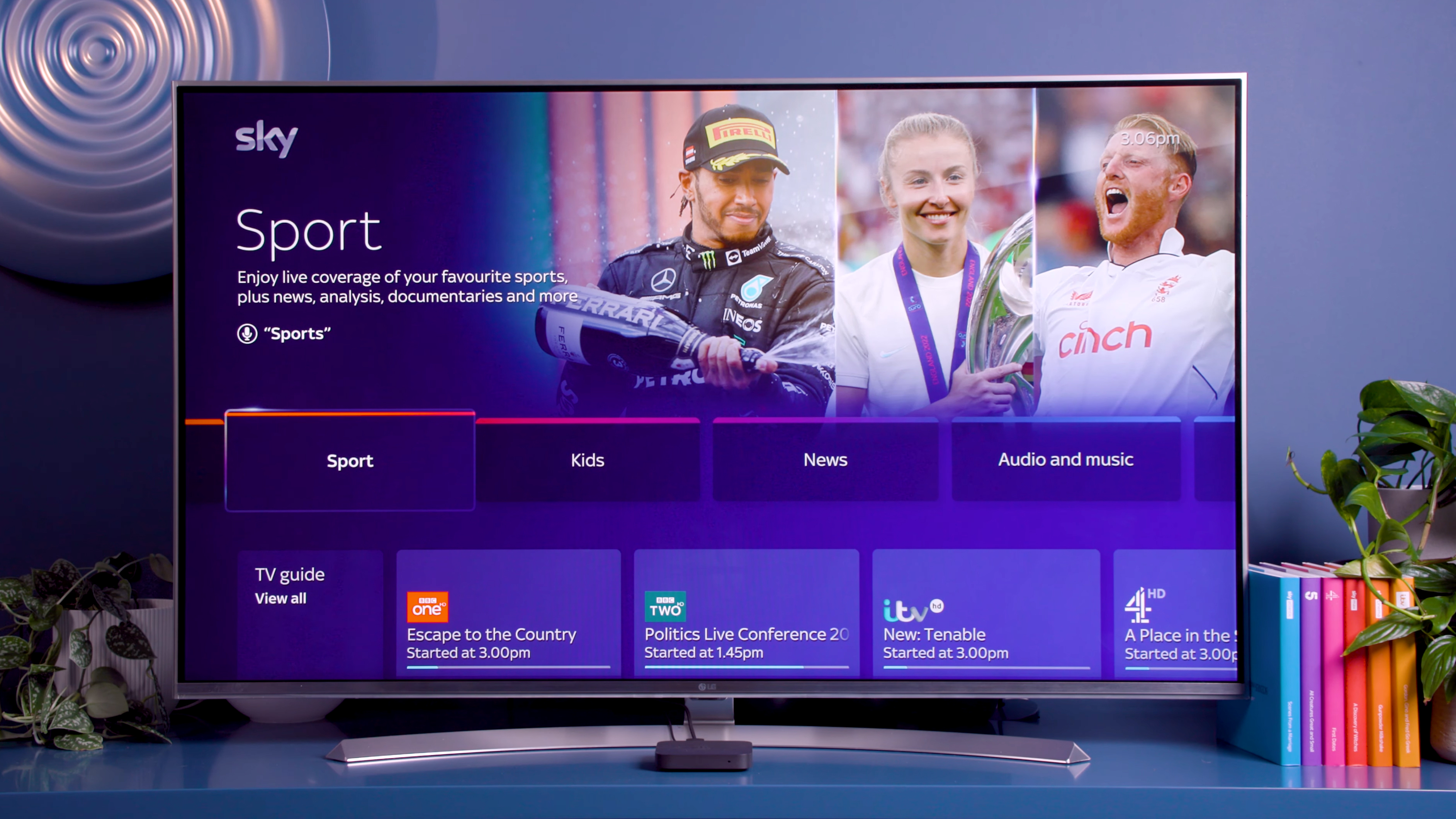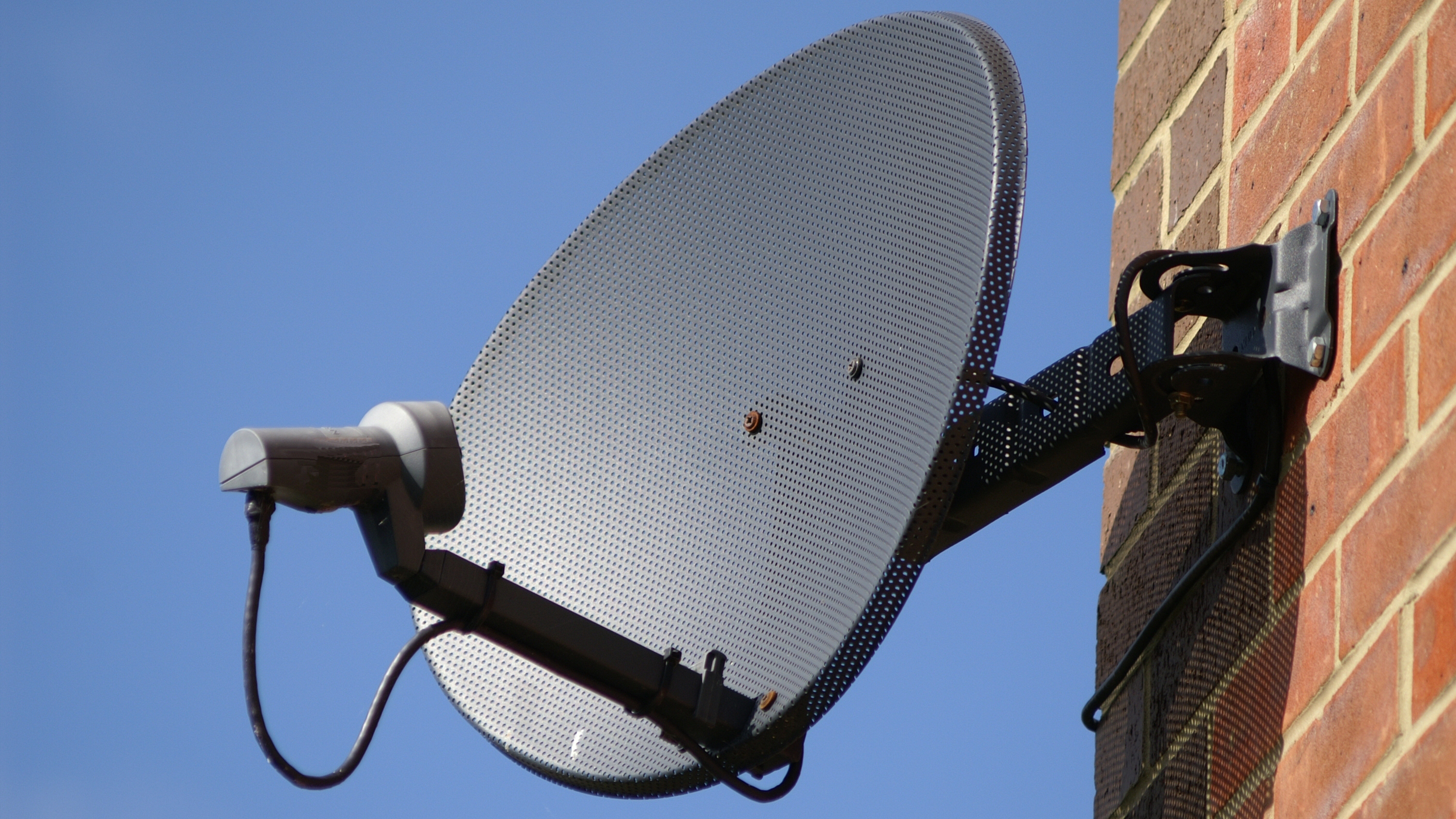I switched from Sky Q to Sky Stream – here are 6 things I've learned

I’ve been a Sky subscriber for over a decade, but this year I decided that something had to change. The traditional PVR-and-satellite dish combo felt like a relic from a bygone age, and my TV bills had crept up to the point where I either needed to have a haggling session with Sky or change tack completely. Reluctant to lose Sky’s Premier League football coverage, I looked into switching to Sky Stream.
Launched in October 2022, Sky Stream is a streaming box that gives you full access to Sky TV alongside other apps like Netflix. The big difference from Sky Q is that there’s no option to record shows – instead, you either watch them live or on-demand. Given that’s how I watch all other TV now, it sounded ideal – particularly as some early sums suggested my monthly bills would come down, too.

However, Sky initially didn't seem too keen to let me switch to Stream. When I tried to do this online, I was greeted with a message (above) assuring me that, as a Sky Q customer, I was already enjoying “the best TV experience” and that I should instead consider Sky Glass (a TV that effectively has Sky Stream built in). As I’m quite happy with my Philips OLED, I picked up the phone to ask to move to Sky Stream instead, and this time they obliged.
That was two months ago, so what have I learned about Sky Stream in that time? And would I still switch from Sky Q today? Here are the main benefits and problems I’ve experienced with Sky’s long-awaited take on the streaming box…
1. It’s not cheap, but it costs less than Sky Q (for me)
If you’re familiar with Sky, you’ll know that its prices fluctuate depending on several things – including whether or not you’re in a contract, and whether or not you have a black belt in haggling. The monthly savings I’ve made by switching to Sky Stream were partly the result of starting a new 18-month contract. But it can often work out cheaper than Sky Q, depending on your current situation.
You can see how my £57 per month Sky Stream bill breaks down below, and compare it to your current package. With Sky Q, I was paying £83 per month for roughly the same content, although this included Multiscreen (which I removed). With Stream, you also get the Netflix Basic plan as part of Sky Ultimate, though you can upgrade to Netflix Premium (UHD quality, up to four devices) for only £8 per month.
| Row 0 - Cell 0 | Sky Stream (p/month) | Sky Q (current prices) |
| Basic bundle (with Netflix) | £26 | £31 |
| Sky Sports | £20 | £20 |
| Sky Ultra HD and Dolby Atmos | £6 | £12 |
| Ad skipping | £5 | £0 |
| Installation | £0 | £20 (one-off) |
| Total | £57 per month | £63 per month |
Sky initially tried to charge me a £40 setup fee for Sky Stream, but I’d seen that this was currently being waived for new customers, and Sky agreed to remove it. While this setup fee comes and goes, it’s worth asking for it to be removed (particularly if you're out of contract). Sky does also let you move to Stream even if you’re still in a Sky Q contract, sometimes without penalty.
Sign up for breaking news, reviews, opinion, top tech deals, and more.
Overall, there’s no doubt that Sky Stream is still pretty pricey when compared to standalone streaming services – particularly when you include extras like ‘ad skipping’. But with some strong offerings for movie fans (Sky Cinema) and sports obsessives (like me), I'd say it’s still an acceptable premium if, like me, you want that content.
2. It’s no Apple TV, but it’s pretty slick (with a few niggles)
Sky Stream is a pretty polished streaming box, and a very different experience to Sky Q. For me, it’s mostly different in a good way – while Q’s local recordings and sidebar made it feel cluttered, Stream offers a cleaner, app-based approach with enough familiarity for those switching from its PVR.
On Stream, your recordings are effectively replaced by the Playlist. This bookmarks any shows you choose from its TV guide with a press of the ‘+’ button on the remote. The Playlist nicely knits together shows and movies from various services, and families can set up five different lists. But it falls short of being that holy grail ‘one stop’ place for all of your viewing – try to add something from Netflix, and you'll be told 'sorry, we can’t add this to your Playlist'.

While the Sky Stream puck looks like a squashed Apple TV, it also isn’t quite as good as the latter. Everything feels a little slower, and Sky Stream’s ‘top picks’ panel in the main menu is keener to recommend things that it would like me to watch (including from services I don’t subscribe to) than the Apple TV’s ‘Up Next’ equivalent.
Sky Stream also has a few annoying niggles. There's no way of removing unwanted programs from its 'continue watching' section, which quickly becomes a mess. But the biggest one for me is an HDMI-CEC issue, which means I can’t get my TV to auto-switch to Stream whenever the latter is powered on. Still, there are no major deal-breakers that might have sent me scrambling back to Sky Q.
3. You need a speedy and reliable broadband connection
To help spice up the whole experience of moving to Stream, I decided to switch my broadband (and router) at the same time. Initially, that wasn’t super-wise as my new fibre connection took a while to settle down, which created some buffering issues when trying to stream live football in UHD.
Fortunately, I now have pretty reliable 150Mbps speeds – and consequently, a largely slick Stream experience – but those early niggles gave me a taste of the issues that can crop up if you have a slower and more temperamental connection.

Sky’s recommended broadband speeds for Stream are a minimum of 25Mbps, or 30Mbps if you want to watch in UHD or add an extra puck for multi-room viewing. I haven’t consistently tried using Stream with slower speeds than that, but a look at Sky’s forums suggests that your experience with the service can vary greatly depending on your broadband connection.
This is likely why Sky gives you a 31-day ‘cooling off’ period when you sign up for Stream, during which you can keep hold of your Sky Q box. If Stream doesn’t work out for you – whether because of broadband issues or otherwise – you can switch back to Q relatively easily without having to start from scratch.
4. Image quality is a slight step up from Q
Sky Stream is a newer piece of hardware than my old Sky Q box, which means its image quality is a slight improvement in places. One of the most noticeable examples is with HD content, which has always been a traditional weakness with Q. On Sky Stream, HD channels look sharper and less noisy.

The Stream puck's 4K HDR quality is also generally excellent, offering crisp and detailed image quality with a side of impressive Dolby Atmos sound (even if this all does cost £6 a month extra).
But it hasn't all been plain sailing. I initially had a few issues with my Philips OLED TV not handling Stream's HDR correctly during live UHD broadcasts, which meant diving into my TV's settings. Unlike on Sky Q, there's no option to switch from 2160p 10-bit to 2160p 8-bit on Stream to alleviate any issues, so I've needed to fine-tune options in my TV's settings instead.
5. It requires some patience and tweaking
Sky Stream is definitely a lot more finicky than my old Sky Q box. For example, I've found that stacking it underneath my Apple TV box was a bad idea and that separating them has improved the stability of my 4K streams. I also needed to tweak my Philips OLED TV settings to combat a dark 4K picture that was the result of its HDR signal.

But there are also a few handy features buried in the settings that can improve your experience. One is a relatively recent opt-in feature called Sky Sports Live Sync, which helps to cut the latency in Sky Sports broadcasts by around 22 seconds. That means you're watching much closer to real-time and can avoid spoilers from your neighbours – just select the Live Sync button when it pops up on a Sky Sports Main Event stream.
Other handy tricks are pressing the three dots on your remote while watching something to quickly turn on subtitles, and also using voice search (which is more powerful than I'd realised, for example letting you search by actor). If you're having buffering issues, then the Sky Stream Netflix app is also a handy place to check to see what speeds are reaching the box – just go to Netflix app > Get Help > Check your network.
6. Sky wants everything back – except your satellite dish
One of the main appeals of Sky Stream is that there’s no need for a satellite dish. If you’re switching from Sky Q, you might be dreaming of removing that ugly eyesore from your wall in the process – but unfortunately, Sky isn't keen to help with this.
Unlike the Sky Q box, which Sky asks you to return in a box that feels like an origami challenge, the satellite dish is technically your property. That's fine, but when I asked Sky if it was able to help me remove and recycle the dish – even if I paid an extra fee – it said it couldn't help.

Sky's help page for returning equipment says this about Sky dishes: "You can recycle it with us, but you’ll need to arrange for it to be removed by a dish-removal company first – we can’t do this for you."
This means I'll likely need to find a dish-removal service – which Checkatrade suggests will cost "anywhere from £50 – £100" – before sending it back to Sky for recycling. A paid all-in-one process offered by Sky would be much simpler, and perhaps this is something it'll offer when Sky Stream becomes more established.
You might also like

Mark is TechRadar's Senior news editor. Having worked in tech journalism for a ludicrous 17 years, Mark is now attempting to break the world record for the number of camera bags hoarded by one person. He was previously Cameras Editor at both TechRadar and Trusted Reviews, Acting editor on Stuff.tv, as well as Features editor and Reviews editor on Stuff magazine. As a freelancer, he's contributed to titles including The Sunday Times, FourFourTwo and Arena. And in a former life, he also won The Daily Telegraph's Young Sportswriter of the Year. But that was before he discovered the strange joys of getting up at 4am for a photo shoot in London's Square Mile.